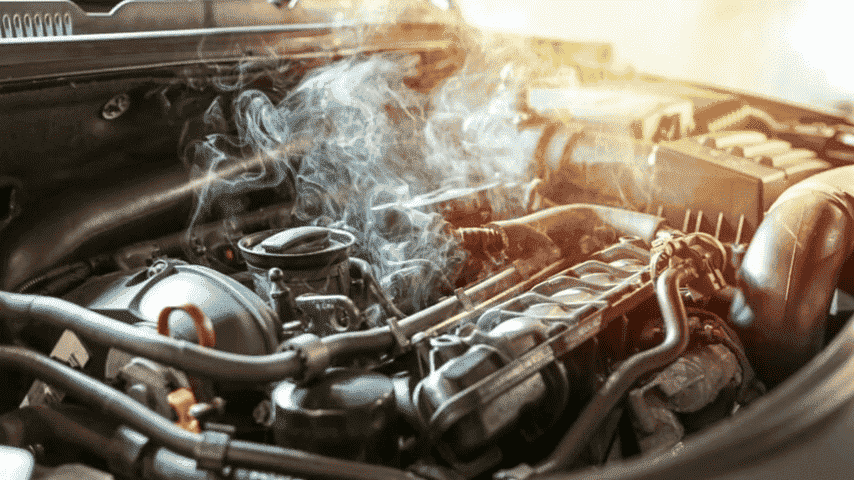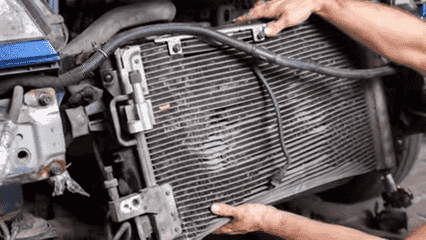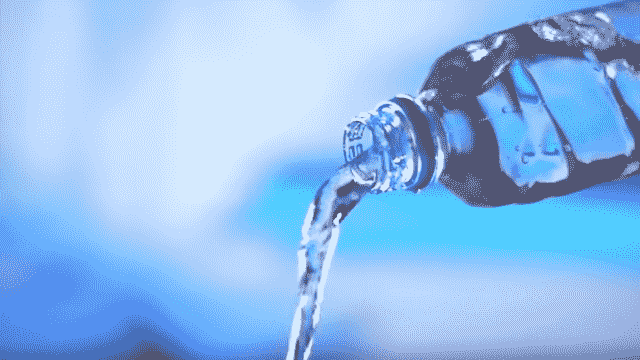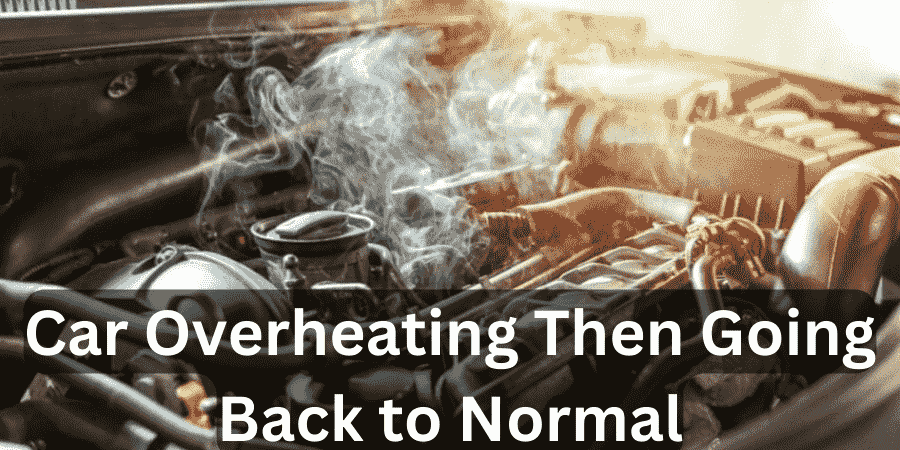Have you ever driven your car at a high temperature and, shortly after it decreased, got back to normal? It’s puzzling, isn’t it? Every car owner has once faced the problem of the car overheating, and this can be very irritating to the owner. Still, in most cases, this is a call for more trouble as it may indicate a deeper problem that may need a mechanic’s attention. Why your car overheats and then starts to normal is something you need to know so that later on, you do not take a very long time before your car is damaged.
Causes of Car Overheating

Low Coolant Levels
The number one cause for a car to overheat is when the coolant level is very low.
Common reasons for low coolant
Low coolant could be a result of leakage in the system, loss through evaporation over some time or due to a bad radiator cap. Leaks can, therefore, be external, such as droppings, which could be seen as water beneath your car or internal, such as a blown head gasket.
How to check and refill coolant
To check the coolant level, make sure the engine is cold and cool down, then locate the coolant reservoir by opening the hood. The level should be set between the two marked points, min and max, on the scale. If yes, pour the correct coolant into the reservoir if it is low or empty.
Faulty Thermostat
The thermostat controls the amount of the coolant that should circulate in the engine. If abused, it tends to heat over.
How a thermostat works
The thermostat remains closed when the engine is cold so that it can effectively heat up fast. After the engine has warmed up and achieved the right temperature, the engine remains open to let the coolant move so that it does not overheat.
Signs of a faulty thermostat
Symptoms are volatile temperatures of the engine, inefficient heating system, and the presence of some signs of leakage around the part that is the thermostat.
Radiator Issues
The radiator, on the other hand, plays the role of avowing heat from the coolant.
Clogged radiator
When the radiator is clogged, the coolant cannot circulate as it is supposed to, and the engine becomes extremely hot. Dirt, debris, and other mineral deposits may also build upon themselves over time, which discourages efficiency.
Radiator leaks and their impact

Holes within the part can result in low coolant in the car, and therefore, it overheats. The most likely indicators of a leak are the dripping of coolant on the ground under the car and a low and constantly dropping level of the coolant.
Water Pump Failure
In this case, barring the water pump, the coolant will not be circulated in the engine as required.
Functions of the water pump
The type of water pump here is the coolant-driven water pump that circulates the coolant all through the cooling system so that the engine runs at the desired temperature.
Symptoms of a failing water pump
It is advisable to look at the symptoms, such as leaks in the water coolant, a whining noise from the front of the car, and excessive heating.
Broken or Worn-Out Belts
Belts are used to drive the water pump and other components that are considered essential.
Types of belts involved
The serpentine belt and the timing belt are critical aspects of the cooling system. These belts bring out the functionality of the water pump; therefore, if these belts break or get worn out, the water pump may stop working.
Signs that indicate belt problems
Signs you can seek include a worn-out belt that shows signs of fraying or cracking or a squealing noise that originates from the engine bay. Daily checks would help identify the problem with the belt, which, when not well-fixed, results in overheating.
Immediate Actions When Your Car Overheats
Car overheating is not a good sign; if it happens, some actions should be taken to prevent it from getting worse.
Turning Off the AC and Turning On the Heater
This action cools the vehicle’s internal environment and decreases the amount of work the engine has to perform. As the heater comes into operation and directs air into the cabin, it would seem that heat is taken away from the engine.
Pulling Over Safely
If the temperature gauge is shining red, safely get off the road as quickly as possible. Carrying on to drive when the car engine is overheating is dangerous since you may cause severe damage.
Checking the Coolant Level
After the engine has cooled off, see whether the coolant level has risen. If it is low, include some coolant in the reservoir to supplement the loss. This results in the openness of the radiator cap on a hot engine, leading to serious burns.
Adding Coolant if Necessary
If the reading on the coolant gauge is low, then you fill it with the kind of coolant your car uses. Regarding emergency shutoff, water can be utilised at the time of an emergency, but it is nonpermanent.
Restarting the Engine
After adding coolant, restart the engine of the transport vehicle and look at the angle of the temperature gauge. If it returns to normal, you can continue with the drive; however, check the temperature from time to time.
Why Does My Car Overheat and Then Go Back to Normal?
The following are the causes of this phenomenon:
Temporary Coolant Blockages
If there is some debris or air which tends to fill the surface of the coolant system, it will intermittingly obstruct the flow and thus lead to overheating. If the blockage does move, then the outside temperature can return to its normal level.
Thermostat Malfunctions
A freezing thermostat can stick and provide occasional high readings. It will open and close at random and can cause high levels of temperature to prevail.
Intermittent Water Pump Issues
The symptom of a defective water pump is that it works at intervals; that is, sometimes it works while at other times it does not. This can result in normal temperature for some time or, more frequently, swinging between normal and high or increased temperature.
Electrical Problems
Sometimes, the nature of sensors or wiring problems can lead to the provision of wrong information or even the cooling system itself fluctuating momentarily until the system is corrected.
Long-Term Solutions to Prevent Overheating
If the cooling system is ignored, overheating becomes an inevitable issue.
Regular Maintenance and Inspections
Perhaps, problems can be detected during the regular check-ups when they just start manifesting themselves and are not that severe yet. The coolant level should be checked from time to time, as well as the hoses and belts and the condition of the radiator.
Keeping the Cooling System Clean

Clean the cooling system from time to time to eliminate the development of grime and determine minerals. This is perhaps the best way to ensure that the coolant gets to flow through the appropriate channels and is efficient.
Replacing Old Parts Promptly
Because internal components could be worn or damaged, such as thermostats, water pumps, and belts, among others, replace them as they degenerate. Neglecting a repair view is that the problem may worsen and result in more costly repairs.
Using the Right Coolant
It is advisable to use the kinds of coolant recommended by the manufacturer of your car. Different types of coolants should not be mixed because the reaction may occur, and the ability of the coolant to cool the system would be hampered.
Conclusion
This article aims to explain why car overheating happens and acquaint oneself where possible, with measures for handling such a situation. One should maintain one’s car, especially by checking the indicators that show a car needs repairs or services. Remain mindful and prompt so that one’s vehicle stays in optimum condition.
FAQs
How often should I check my car’s coolant level?
It’s a good idea to check your coolant level at least once a month. Regular checks can help you catch leaks or low coolant levels before they cause overheating.
What should I do if my car overheats while driving?
If your car overheats while driving, turn off the AC, turn on the heater, and pull over safely as soon as possible. Check the coolant level and add coolant if necessary. Restart the engine and monitor the temperature gauge.
Can a car overheat alone due to hot weather?
Yes, extremely hot weather can cause a car to overheat, especially if the cooling system is compromised. Ensure your cooling system is in good condition to handle high temperatures.
Is it safe to drive a car that has overheated?
It’s not safe to drive an overheated car. Continuing to drive can cause severe engine damage. Pull over and address the issue before driving again.
How much does it typically cost to fix an overheating car?
The cost to fix an overheating car can vary widely depending on the cause. Simple fixes like adding coolant or replacing a thermostat may cost around $100-$300, while more severe issues like a blown head gasket can cost $1,000 or more.

